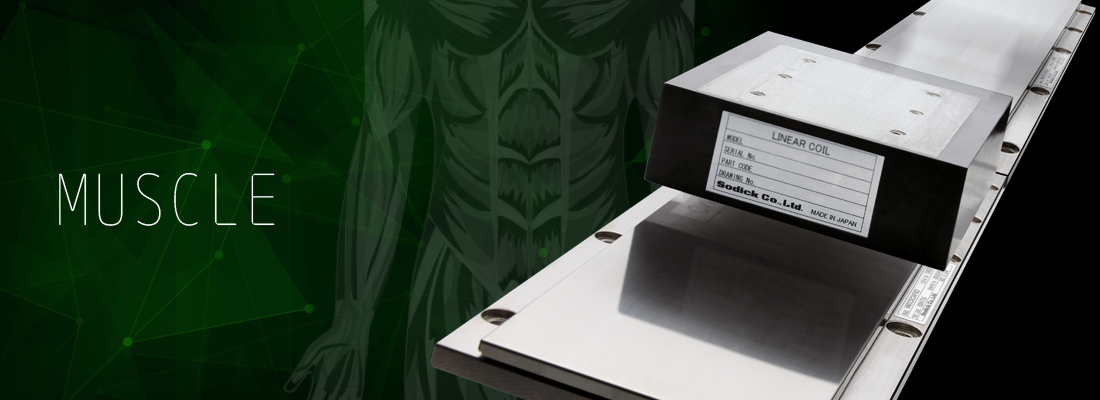RIGID LINEAR MOTOR TECHNOLOGY
Rigid Linear Motor Axis Drives come standard on Sodick’s EDM equipment and High Speed Mills.

Advantages of linear motor drives:
- Eliminates ball screw drives
- No backlash or lost motion
- Ideal part geometry and finish with reduced skim passes
- Fewer wire breaks
- Increased cutting speed
- No maintenance
- 10-year Positioning Accuracy Guarantee
What happened to Ball Screws?
The basic technology of ball screws or rotary motor systems had been the standard in EDM up until 1999. At that time ball screws seemed to provide decent accuracy, were able to withstand high thrust loads and incurred minimal friction. However, as time went on, the contact-type ball screws, due to their mechanical design, would wear and have to be replaced.
The time it took for ball screws to wear out would be based on how much the machine was used, but the average was about four to five years, dependent upon the type of application used, load, speed, lubrication, contamination and heat. To maintain the life of the ball screws, thorough cleaning on a regular basis was required. This cleaning would reduce the speed of wear, but not eliminate it. Many shops found it costly and difficult to maintain over the machine's life. A 90 percent reduction in the ball screw's life can be anticipated when operating the nut and screw without lubrication, so proper lubrication was very important.
When a ball screw system is moved at a high feedrate, overshoot and undershoot can occur as a consequence of windup since the load will oscillate around or stop before the desired stopping point, increasing settling time and reducing throughput. This is because the rotary encoder bases positioning on the number of divisions moved by a rotary disk. It does not and cannot take into consideration any thermal conditions such as: twisting in the ball screw due to torque, wear or thermal expansion in the ball nut or coupler, and backlash in the ball screw. Thus, due to the mechanical nature of the ballscrew itself, positioning is inherently compromised with use.
Sodick wanted to offer their customers a solution to these problems, introducing the rigid linear motor.
How Rigid Linear Motor Drives Work:
Rigid linear drives contain the same raw components as a servo motor (magnets & copper coils), but uncoils the motor itself and mounts it directly into the machine castings. As amperage enters the coils, it creates force that is repelled against the magnets. This direct electromagnetism is the driving force, eliminating the need for indirect servo systems, such as ball screws.
Linear motor technology, which is based on electronic drives, offers an option with several advantages, including improvement in accuracy, repeatability, speed and acceleration. Since rigid linear motors are a direct electronic drive (no mechanical parts), they eliminate problems with backlash and wear.
Data transmission to linear motors is instantaneous with the use of Sodick's proprietary motion controller technology, and over shoot and under shoot does not occur thanks to absolute glass scales attached directly to the axis. These high-resolution scales measure the location of the drive at all times, so the exact position is always known. Moreover, because the magnetic drive eliminates unnecessary mechanical movement, rigid linear motors also produce zero vibration and zero backlash.
The precision and stability achieved with a no-contact drive makes rigid linear motors an ideal option, even for applications that do not need their speed but require their accuracy.
NSD VINA CO., LTD - Industrial Solutions
T: (+84) 024-6688-2448
E: info@nsdvn.com